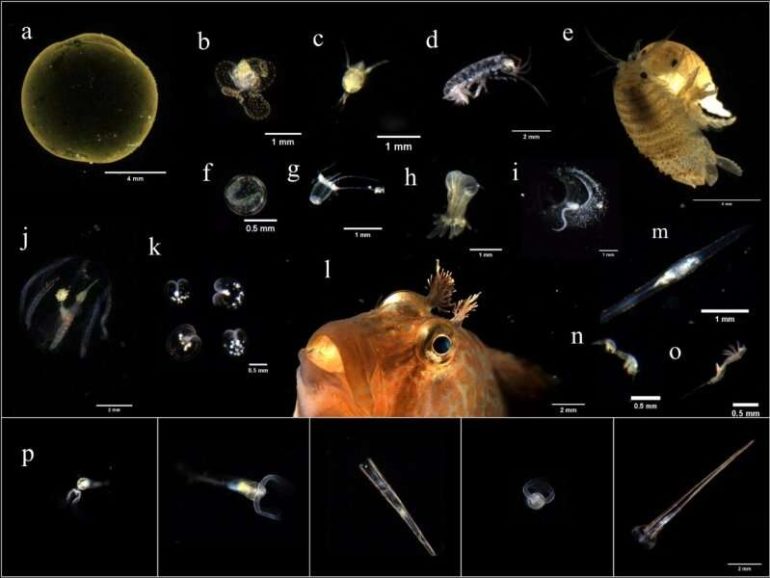Mesoplankton refers to plankton with a body size between 200–20,000 μm. Since mesoplankton are the key components of coastal ecosystems, their abundance and composition can promptly reflect environmental changes in local seawater.
A research team led by Dr. Li Jianping from the Shenzhen Institute of Advanced Technology (SIAT) of the Chinese Academy of Sciences has developed a buoy-borne underwater dark field imaging system that can expand the geographical and temporal marine plankton monitoring capabilities of a surface buoy network. Relevant results were published in IEEE Journal of Oceanic Engineering on Oct. 20.
The new imager in the trial system features a new strobe LED illuminator with a 360° inward convergent laminar lighting design. Such optical design not only facilitates high-quality underwater darkfield color photography of marine plankton, but also reduces light leakage to the local underwater environment and thereby minimizes the distortion of their distribution caused by phototaxis-induced aggregation of zooplankton.
In addition, installation of different lenses enables the imager to support switchable magnifications for imaging a size range of 200 μm–40 mm. To reduce data storage and transmission loads, the imager is equipped with an embedded computer to perform online object detection preprocessing after image acquisition.
The system can detect individual plankton and suspended particles from raw images. It can then transmit the cropped region of interest (ROI) vignettes instantly to a remote server, where they are further identified and quantified by cloud computing-based deep learning algorithms to obtain monitoring information for end users’ remote retrieval.
Through raft and buoy trials, 46,804 plankton and suspended particle images have been annotated through a human–machine mutually assisted effort. The result is a data set with 90 categories.
The imager system was integrated into the surface buoy and deployed in Daya Bay in the northern South China Sea for eight months. It transmitted a total of 1,545,187 region-of-interest images back to the server, thanks to its high-frequency and long-time continuous sampling capability.
It also observed plankton diel vertical migration phenomena with a higher temporal resolution, and, for the first time, an unprecedented outbreak of Creseis acicula in the waters near the southwest coast of Daya Bay.
“This is the first successful trial of deploying a submersible imager under a moored surface buoy for long-term, continuous, high-frequency and in situ monitoring of marine plankton in coastal waters,” said Dr. Li. “The popularization of such a paradigm especially with a networked deployment will reduce the cost, enlarge the spatial coverage, increase the sampling frequency, and extend the deployment time of the marine plankton monitoring programs.”
Plankton may head poleward as a result of global warming
More information:
Jianping Li et al, Development of a Buoy-Borne Underwater Imaging System for In Situ Mesoplankton Monitoring of Coastal Waters, IEEE Journal of Oceanic Engineering (2021). DOI: 10.1109/JOE.2021.3106122
Provided by
Chinese Academy of Sciences
Citation:
Buoy-borne underwater dark field imaging system improves marine plankton monitoring capability (2021, October 28)
retrieved 28 October 2021
from https://techxplore.com/news/2021-10-buoy-borne-underwater-dark-field-imaging.html
This document is subject to copyright. Apart from any fair dealing for the purpose of private study or research, no
part may be reproduced without the written permission. The content is provided for information purposes only.



